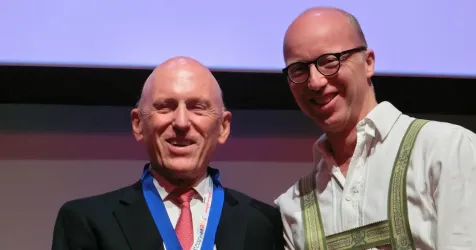
VIENNA — Corneal regeneration was the topic of this year’s Binkhorst Medal Lecture at the European Society of Cataract and Refractive Surgeons meeting.
“We have to be aware that corneal transplantation, great as it may be, is not acceptable in terms of outcomes,” Jorge L. Alió, MD, PhD, said.

He mentioned the high failure rates at 5 years, up to 33% with deep anterior lamellar keratoplasty, 44% with Descemet’s stripping endothelial keratoplasty and 45% with penetrating keratoplasty. Failure after re-grafting is also a global problem, ranging between 34% and 70% with PK. In addition, more than 30% of anatomically successful PK and DALK procedures lead to no more than 20/50 best corrected visual acuity.
“This is what we have but is not what we need,” Alió said. “We need something that is better in the long term with fewer complications, leading to better visual outcomes and not requiring lifelong immunotherapy.”
A shortage of corneas results in more than 40,000 visually impaired people waiting for corneal transplantation every year in Europe alone, with 10 million untreated cases of corneal blindness globally. Hence, there is a need to move away from corneal replacement and work toward corneal regeneration at the three levels of the ocular surface, stroma and endothelium.
“And the final goal is to have the three levels assembled in a corneal organoid, with optical power and curvature customized for the patient,” Alió said.
Among the latest attempted methods of corneal regeneration, he mentioned the use of mesenchymal stem cells and autologous adipose-derived adult stem cells, successfully used by his group in keratoconus patients. The latest frontier is the engineering of artificial corneal endothelial tissues from cells of visceral origin, namely omental mesothelial cells, which might be a breakthrough in the coming years.
